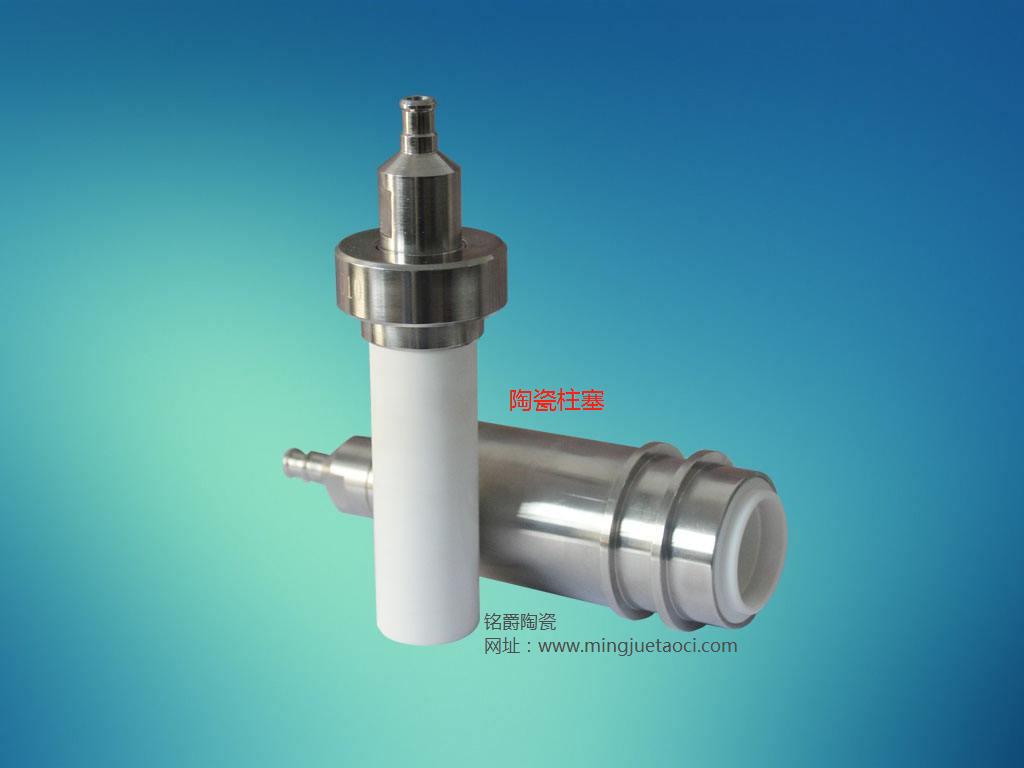
Ceramic plunger, ceramic rod, ceramic tube / ring manufacturer
Focus on alumina ceramic and zirconia ceramic processing customization

WeChat Consulting
 Hotline:
Hotline: +86 133-3268-6959
Some zirconia ceramics have a lot of pores on the surface, but some are very smooth and have almost no pores. So what is the reason? In fact, it has a lot to do with the sintering of zirconia ceramics. The following is a detailed analysis of Mingjue Ceramics Factory. I hope everyone will benefit.
Zirconia ceramics can be used not only as a functional material, but also as a carrier, additive or active component of industrial catalysts, and plays an important role in the reaction of CO2 plus H2 to synthesize methanol. There have been many reports on the effect of pore size distribution on sintering and microstructure development. The change in the pore size distribution of the same powder preform is often caused by the agglomeration of primary particles. Studies have shown that not only the density but also the densification rate are greatly affected by the pore size distribution.

The study of microstructures found that the more air holes in the green body, the lower the sintered density. In extreme cases, when the pore size is bimodal, the atmospheric pores between the aggregates, or the so-called secondary pores, can hardly be eliminated. Experiments have found that although the grain growth is affected by the phase structure, the properties of the powder and the green body (green body density, pore size distribution) do not affect the grain growth in the green body during heating and heat preservation.
Although the properties of Yuefei ceramic green body, such as density, do not affect grain growth, they affect the size ratio of pores to particles. The properties of the green body do not affect the grain growth, but affect the growth of pores, so it also affects the densification behavior. The relationship between the grain size and density at the initial stage of densification is as described above. There is a linear relationship between the grain size and density at the middle stage of sintering. According to the definition of the sintering stage, there is only densification at the initial stage of sintering without grain growth.
This phenomenon may exist in the green body with large initial particle size, but for the green body composed of ultra-fine powder such as ultra-fine zirconia used in this study, even in the initial stage of sintering, the grain growth and densification Chemicals also occur almost simultaneously. This result means that for solid-phase sintering of ultrafine powders, the initial stage of sintering can be considered to be approximately absent, or at least negligible.
From this, the following conclusions can be drawn:
① The grain growth in the green body is not affected by the properties of the shaped body:
② Stomatal growth is controlled by grain growth and densification at the same time, the former causes the pores to grow simultaneously with the grains while the latter causes the pores to shrink, the pore R value decreases, and the pore growth is affected by the properties of the molded body;
③The initial stage of ultra-fine powder sintering is almost negligible, and the grain growth and densification occur at the same time. From the beginning of firing to the end of the middle period, the grain size and density have a linear relationship. This linear relationship can be based on grain growth and densification The same diffusion mechanism of mass transfer and the time-dependent dependence of grain growth and density during the isothermal process can be explained;
④ The linear relationship between grain size and density is affected by the properties of the molded body, because grain growth is driven by the chemical potential of the size difference between the particles, and densification is driven by the sintering compressive stress acting on the pores;
⑤ Higher dihedral angle, molding density, narrow particle and pore size distribution are conducive to moving the relationship between grain size and density to the direction of high density and small grain size.
 Contact: Miss Li / +86 13332686959
Contact: Miss Li / +86 13332686959 Contact: Mr Li / +86 13316634021
Contact: Mr Li / +86 13316634021
 Consultant: Mr. Lin / 13532935121
Consultant: Mr. Lin / 13532935121
 Mail Box: 29384242801@qq.com
Mail Box: 29384242801@qq.com
 Fax: +86 0769-81587969
Fax: +86 0769-81587969
 Website: en.dgmjtc.com
Website: en.dgmjtc.com
 Add: No. 9, Xingfa South Road, Chang'an, Wusha Community, Chang'an Town,
Add: No. 9, Xingfa South Road, Chang'an, Wusha Community, Chang'an Town, Scan it
Scan it